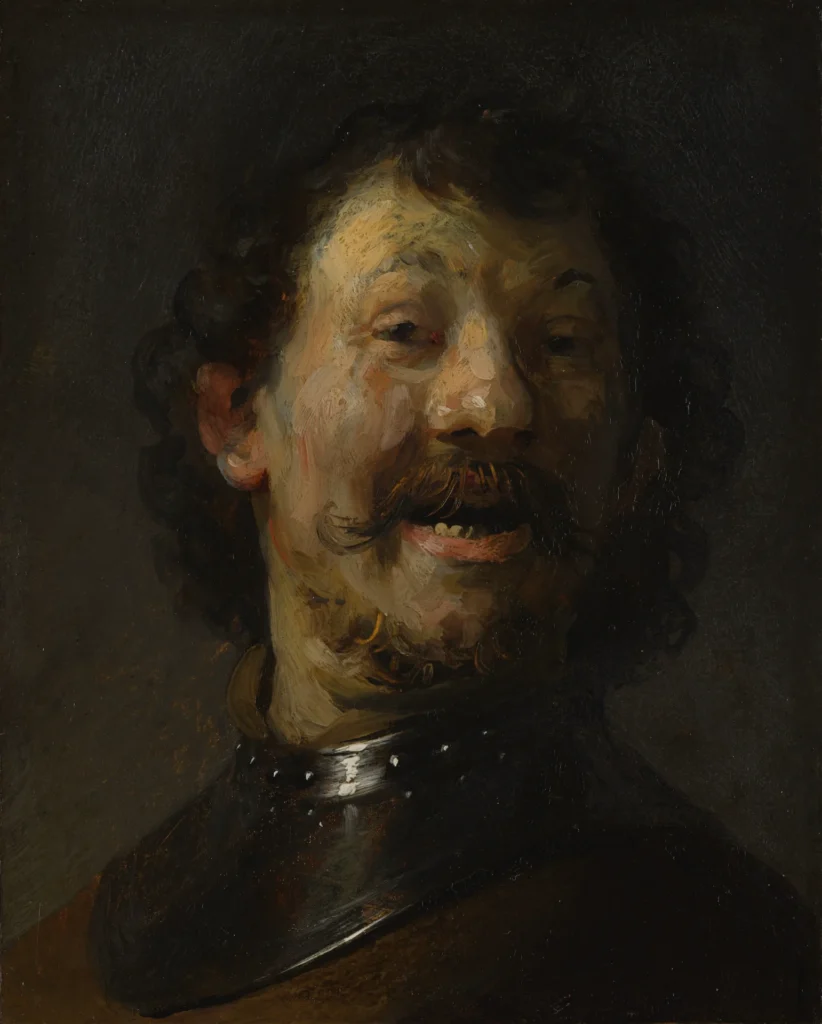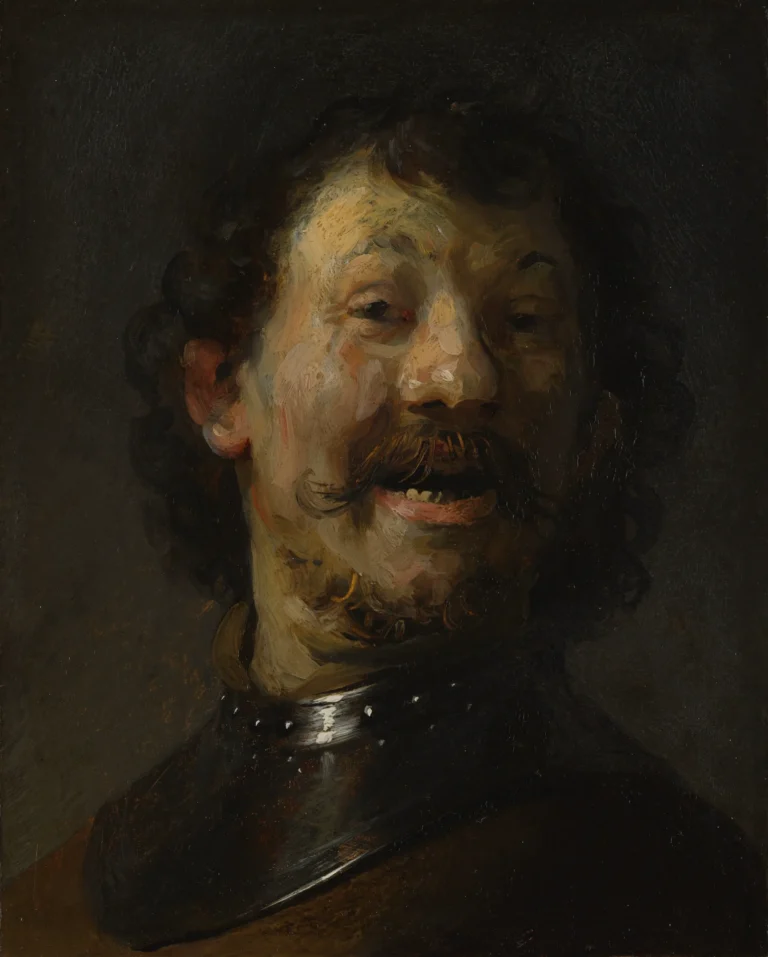Self-Portrait of Rembrandt Van Rjin Laughing II
'Rembrandt Laughing (1628)', stands as one of the artist’s most vibrant self-portraits. This oil on copper painting, measuring 22.2 cm × 17.1 cm, presents a youthful Rembrandt adorned in a deep purple robe, exuding a joyful spirit. Captured in the moment of laughter, the spontaneous brushwork conveys emotion, marking a departure from his more solemn later works. Housed in the J. Paul Getty Museum, this piece is a testament to Rembrandt's profound ability to portray the complexities of the human experience.
Year 1628
About the Artwork
This charming work of art, 'Rembrandt Laughing,' painted during Rembrandt’s early career, captures an exuberant moment in time. Unlike many of his later self-portraits that often reflect deep introspection and melancholy, this painting reveals a side of Rembrandt that embraces joy and humor. The use of oil on copper demonstrates his willingness to experiment with materials, while the rich colors and lively expression symbolize his emerging mastery of the chiaroscuro technique. The jovial nature of this piece invites viewers to connect with Rembrandt not just as an artist, but as a man full of life and laughter.
Did You Know
Liked what you see? Add it to your collection.
Enjoyed reading? Share it.
... continued
Rembrandt Laughing
This painting, dated around 1628, is an oil on copper work by Rembrandt van Rijn. Here are some key details:
- Medium and Dimensions: Oil on copper, measuring 22.2 cm × 17.1 cm (8.7 in × 6.7 in)
- Location: The painting is housed at the J. Paul Getty Museum in Los Angeles.
- Description: The painting depicts a young Rembrandt, bareheaded and dressed in a deep purple robe with a brown woolen cape and a polished metal gorget. He is shown laughing, with his head tilted back, and his hair is long and fluffy. The brushwork is characterized by its spontaneity and boldness, capturing the transient expression of laughter.
- Significance: This work is one of Rembrandt's early self-portraits and is classified as a tronie, a study of character and emotion. It showcases Rembrandt's ability to capture human emotion and is notable for its rare jovial self-presentation, contrasting with his more profound and often melancholy self-portraits from later years.
This painting is distinct from the later self-portraits of Rembrandt, such as the one from around 1668, which shows him as an older man and does not clearly depict him laughing.










